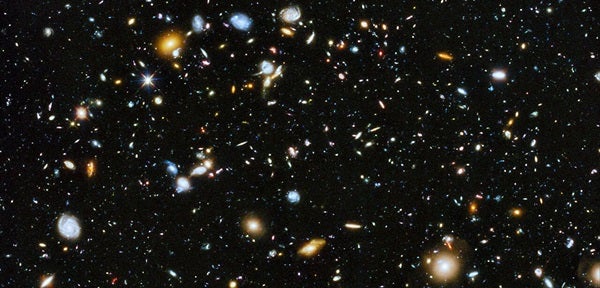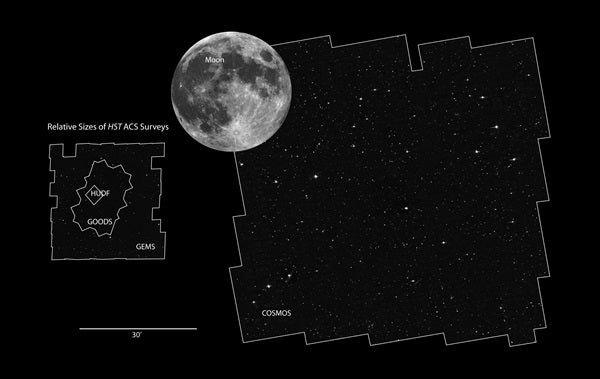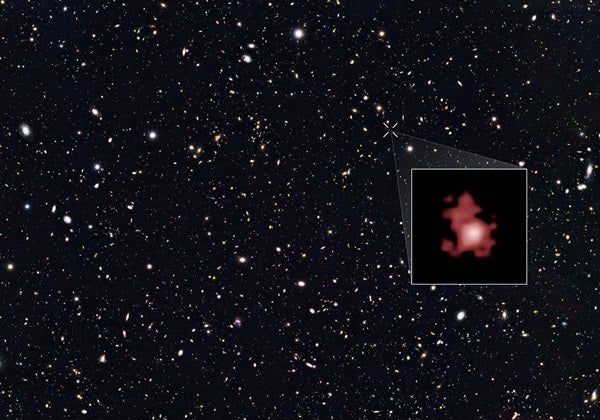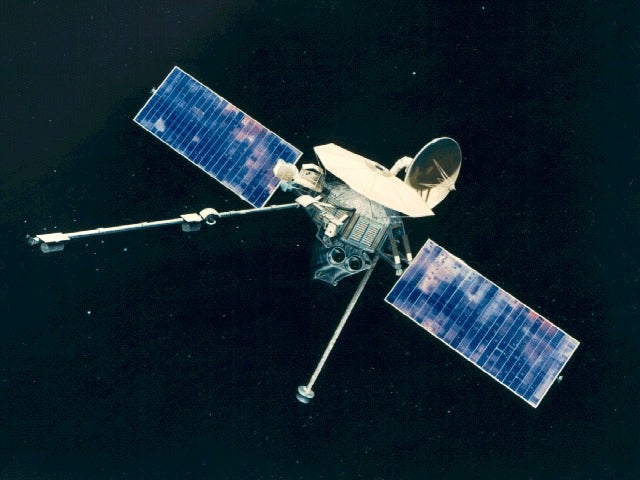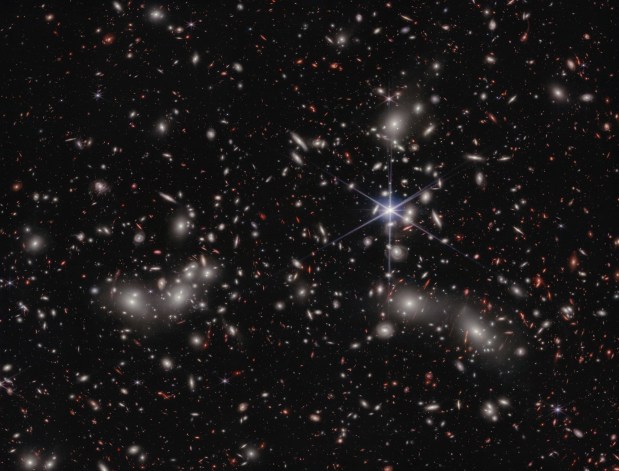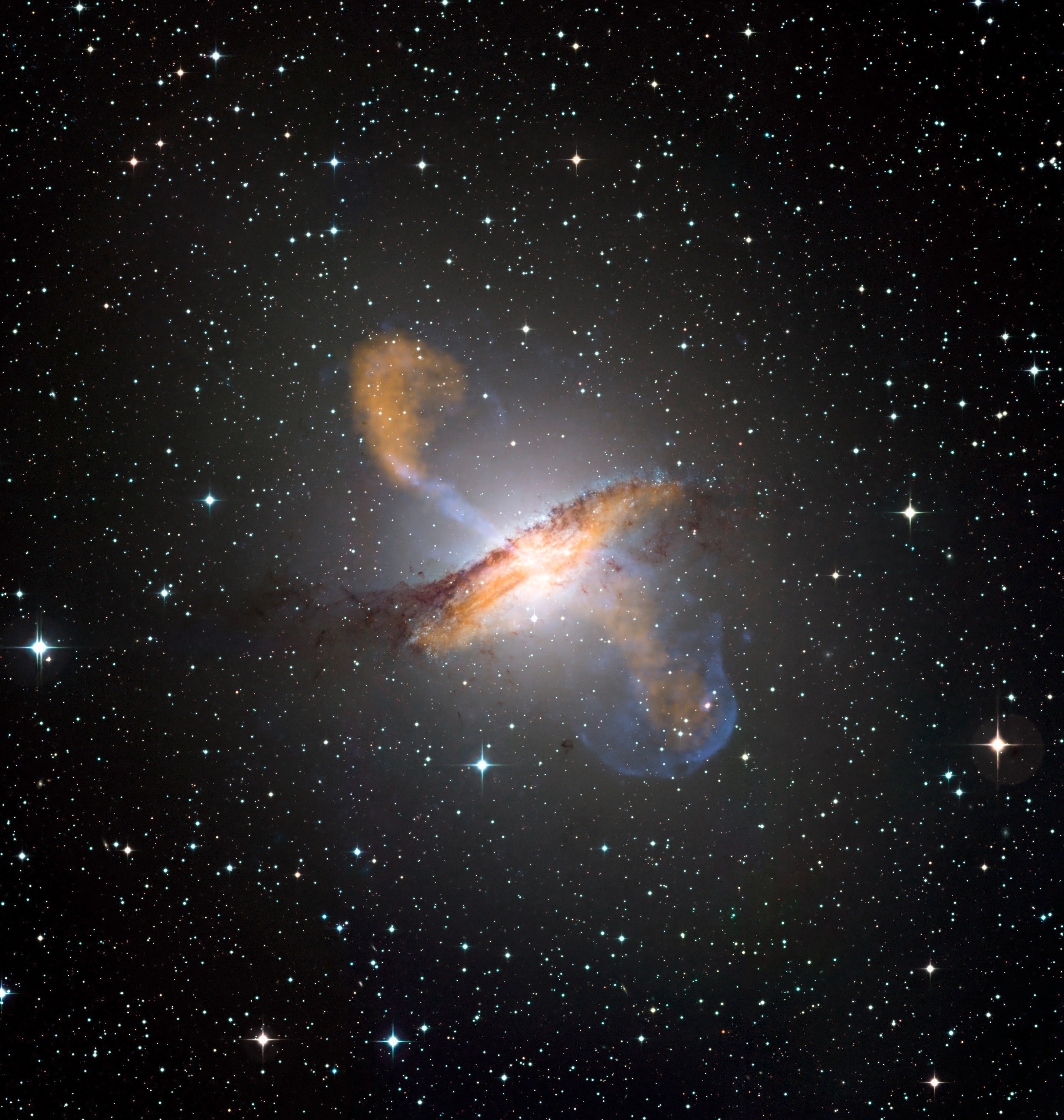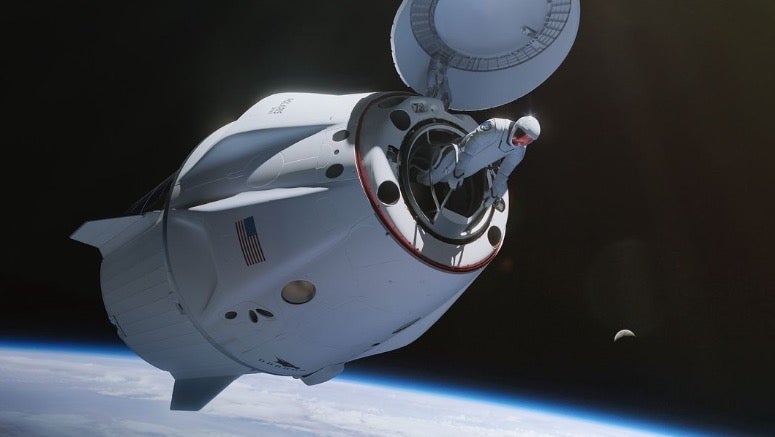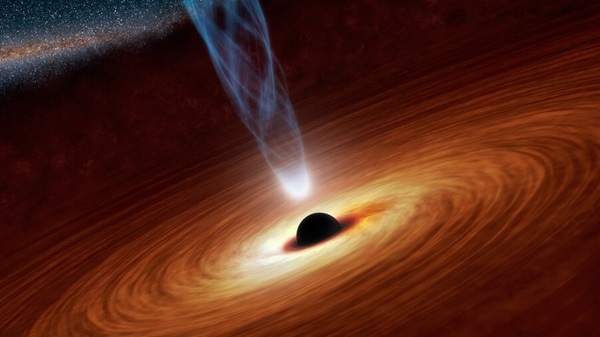In the northern constellation Ursa Minor lies a small and inconspicuous patch of sky devoid of prominent stars or galaxies. A similar, twin patch lies in the southern sky in the direction of Fornax. The two regions, known among astronomers as the GOODS fields, don’t seem like much at first glance. But make no mistake about it — the fields have redefined our understanding of the young universe.
That infant universe looked much different than it does today. The universe has been expanding and evolving for billions of years. What gave rise to the rich assemblage of galaxies of different shapes and sizes? Did galaxies always look like they do today? To answer such questions, astronomers follow a simple recipe: Observe very distant galaxies. Because light travels at a finite speed, we see distant objects as they were in the past. Unfortunately, distant galaxies are very faint.
And here is where the GOODS fields come in. Astronomers threw a large amount of resources into the fields to get the most comprehensive look into the past. GOODS stands for The Great Observatories Origins Deep Survey. “We came up with the GOODS acronym because we wanted to deliver the goods,” jokes Mauro Giavalisco, an astronomer at the University of Massachusetts in Amherst.
The idea for the fields didn’t just pop out of nowhere. Like many other success stories in science, it all started with a cup of coffee.
The first of them all: Hubble Deep Field
In 1994, the Hubble Space Telescope (HST) was on fire. Thought it had a rough start plagued by defective mirrors, after a shuttle service mission installed corrective optics, it finally started producing sharp images of planets, star systems, and galaxies. Robert Williams, then the director of the Space Telescope Science Institute in Baltimore, spent every morning drinking coffee and discussing the latest science results with a group of young scientists. The first deep HST images of galaxies made an especially strong impression on the group. Williams realized that, with a proper program, HST could look farther back in time than ever before. The idea of a deep field — a view constructed of images that represent the equivalent of extremely long exposures — began to emerge.
The idea was risky: They didn’t know what, if anything, this deep field would reveal. And because HST was in high demand, it would be difficult to get the needed time for the program through the usual peer-review process. To make the project a reality, Williams made some shrewd moves. As a director, he had the discretion to dedicate a substantial amount of the observing time to the project. Furthermore, he decided to make the data public immediately after acquisition, starting a proud tradition of so-called treasury projects.
At the end of 1995, HST observed a tiny spot in the sky for ten days straight. The combined image, known as the Hubble Deep Field, was spectacular. An area of about 2.6 arcminutes on a side contained roughly 3,000 galaxies, some of them emitting light when the universe was less than 2 billion years old.
But why stop with the Hubble Deep Field? The success of the program quickly spurred thoughts of new, deeper fields.
Everyone gets the GOODS
While astronomers have designated several deep fields in the sky over time, the GOODS fields stand out due to the repeated attention they received. Every time astronauts installed a new, more powerful camera on HST, the telescope was turned towards the fields to produce progressively deeper images. X-ray, infrared, and radio telescopes spent many hours staring at the fields, and so did the largest ground-based telescopes. The investment of time in the two fields, each about one-quarter the size of the Full Moon, was enormous.
The idea to make high-quality data immediately available to everyone encouraged committees to award huge amounts of observing time and resources to study the fields. “The public observations turned out to be the winning paradigm for the investigation of the high redshift science,” says Giavalisco.
The observations of the fields led to a massive number of studies and results. Scientists got a clear view of how galaxy characteristics changed over time. “People thought early galaxies were large and diffuse, but in fact, they were small and compact,” says Giavalisco. It turned out that galaxies formed stars more enthusiastically in the past. Carefully thought-out observations of the fields discovered many distant supernovae, leading to an improved understanding of the accelerated expansion of the universe. Deep X-ray observations revealed distant active galactic nuclei. The list is endless.
The fields also contain some real astrophysical gems. For example, the northern GOODS field hosts the most distant object ever discovered: The galaxy named GN-z11 radiated the light we see today only 400 million years after Big Bang.
JWST continues the legacy
Unsurprisingly, the long-awaited James Webb Space Telescope (JWST), scheduled to launch Dec. 25, will also take a long, good look at the GOODS fields. “If one were to decide where could you get the most bang for your dollar, it would be in the GOODS fields because there’s already so much other information,” says Marcia Rieke, an astronomer at the University of Arizona in Tuscon and the principal investigator of JWST’s NIRspec spectrograph.
Rieke co-leads the JWST Advanced Deep Extragalactic Survey (JADES), a large program that will observe the two GOODS fields for almost 800 hours. The telescope will simultaneously use two instruments to acquire infrared images and spectra of the galaxies in the fields.
The JADES program will continue the quest to understand galaxy evolution. JWST will observe the most distant galaxies, perhaps even the first stars. It will trace galaxy morphologies over time and unveil the universe’s chemical evolution. The puzzling origin of supermassive black holes in a young universe is also on the JWST’s agenda.
Perhaps the most exciting part of staring into the GOODS fields is the unknown. Every time a new instrument or telescope looked at the fields, new and unexpected things emerged. There is no reason to believe that the same won’t happen with JWST — and its successors.

